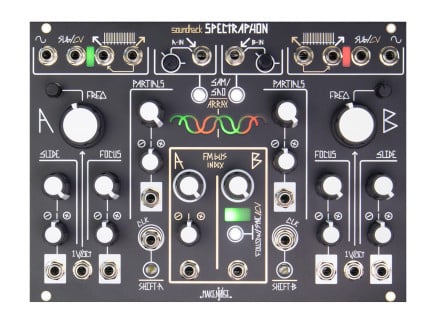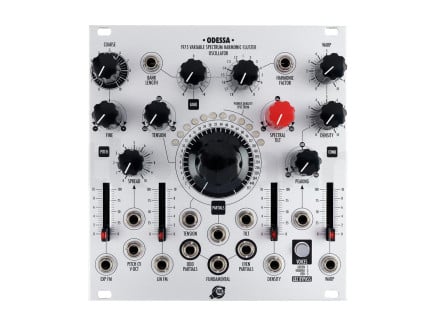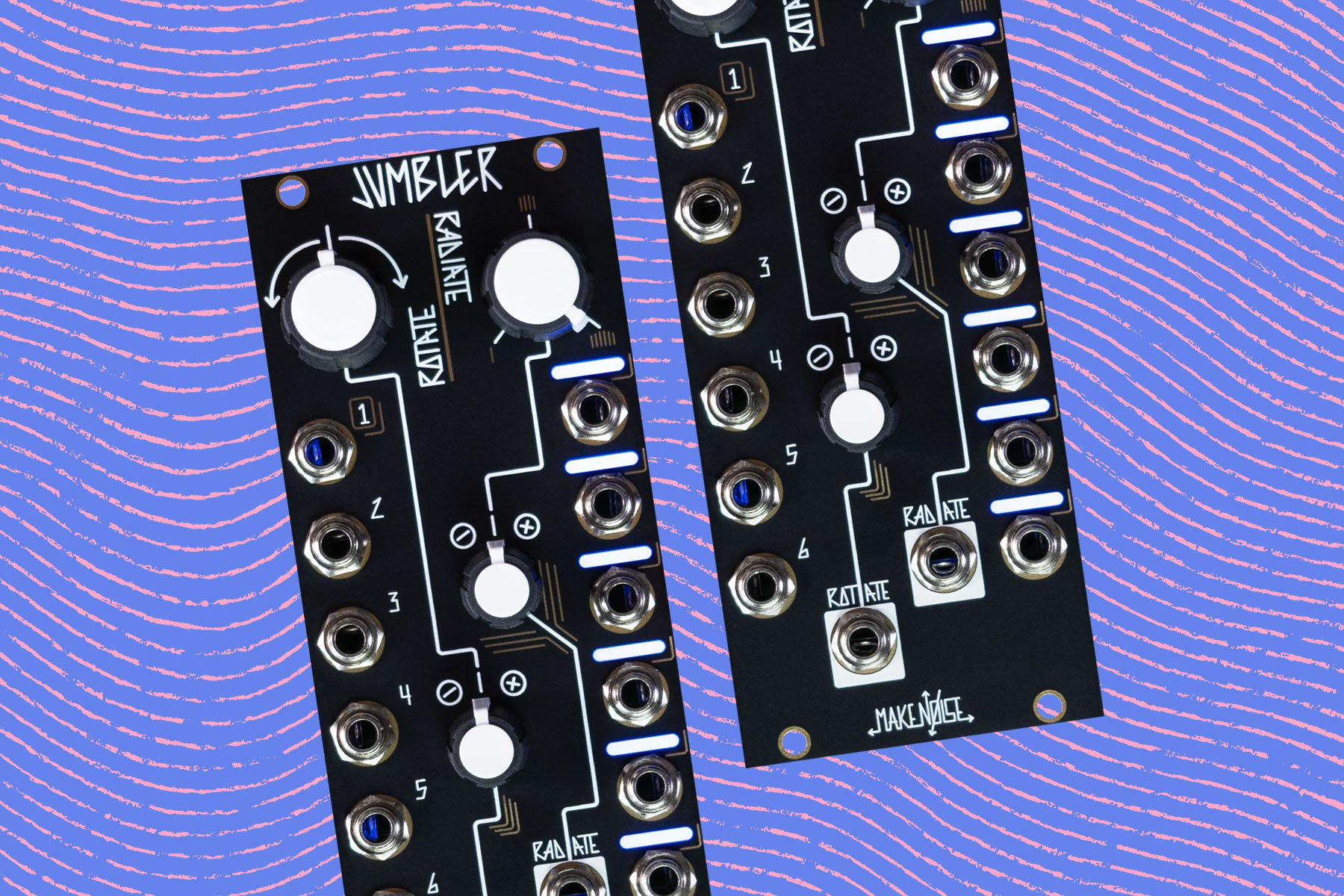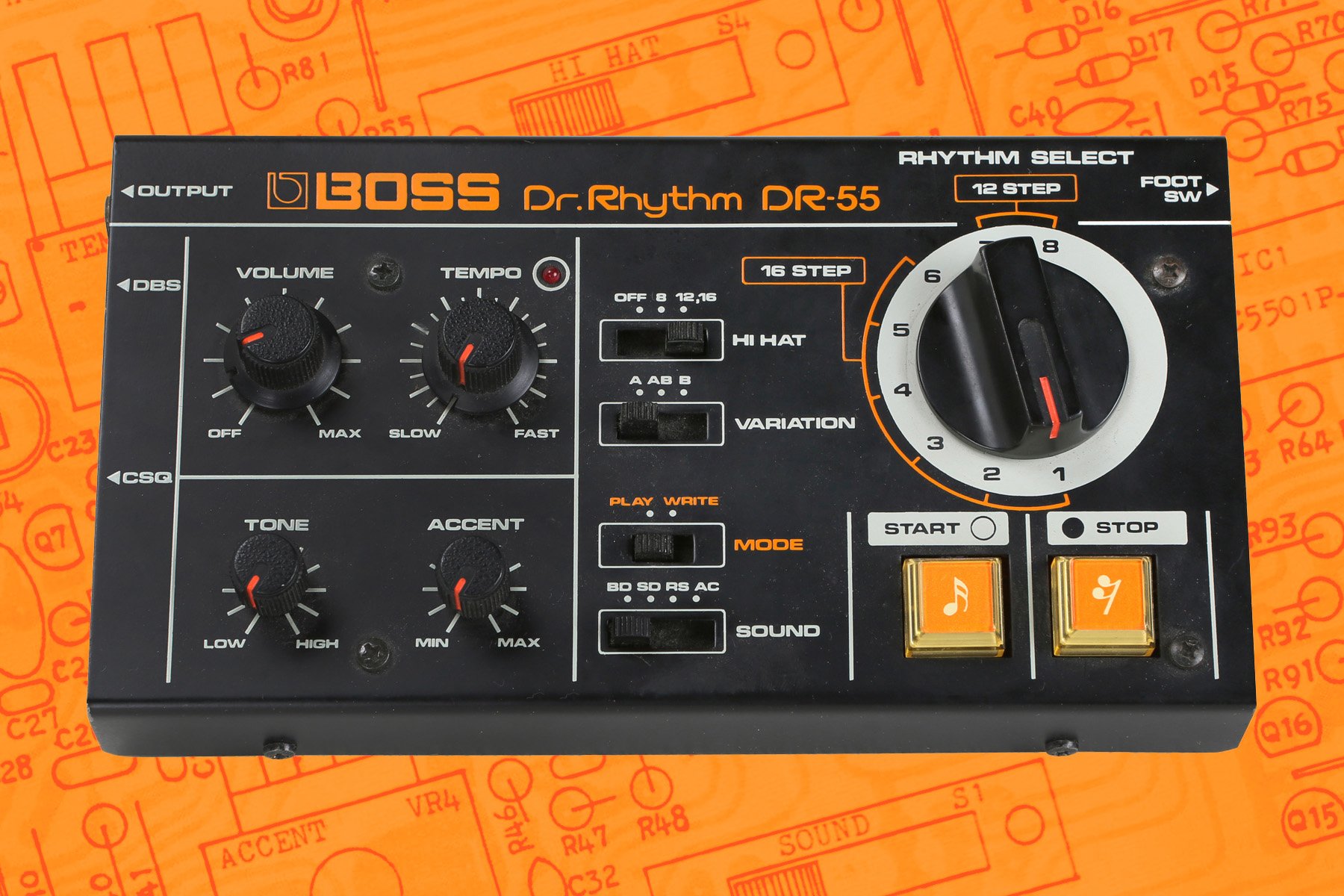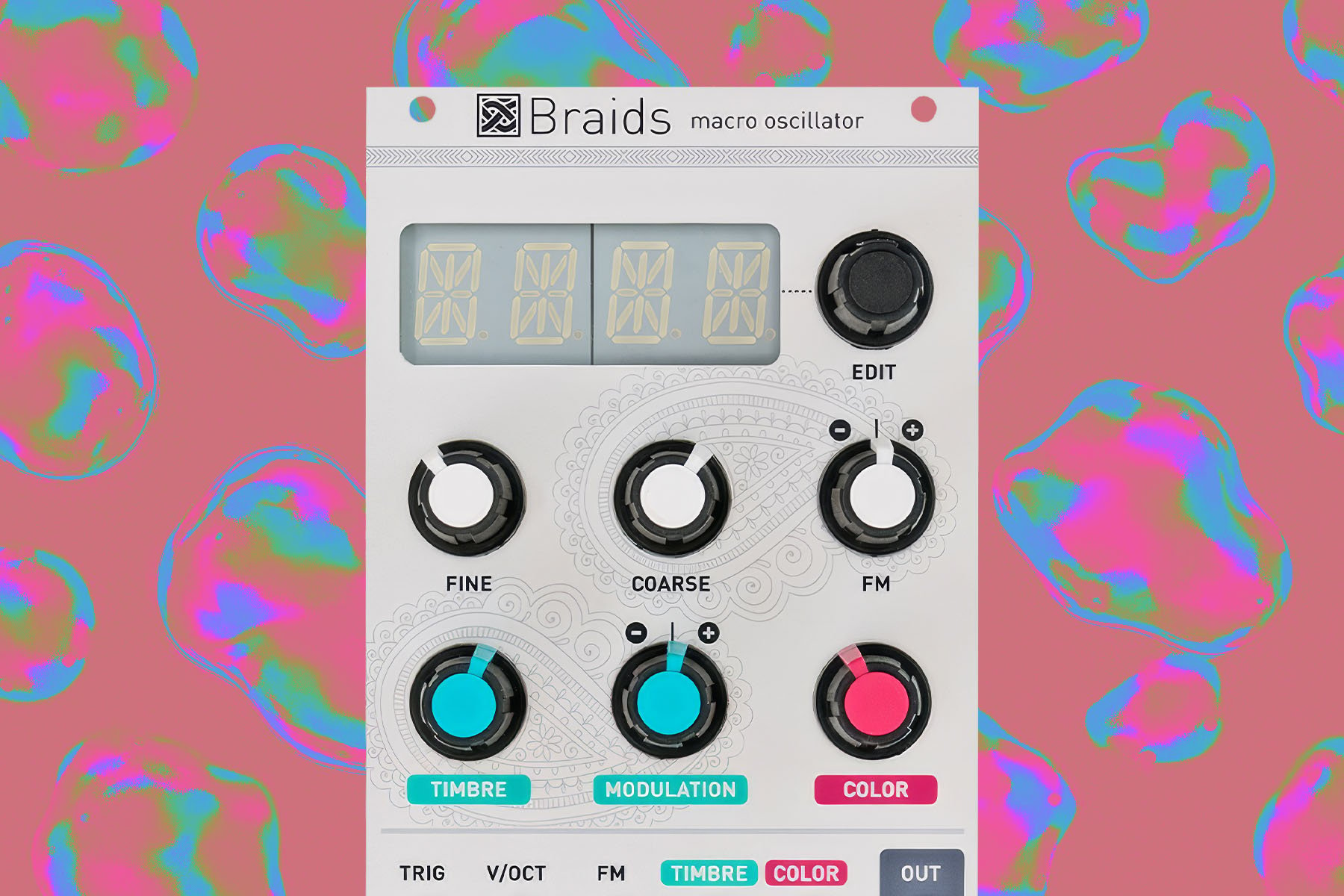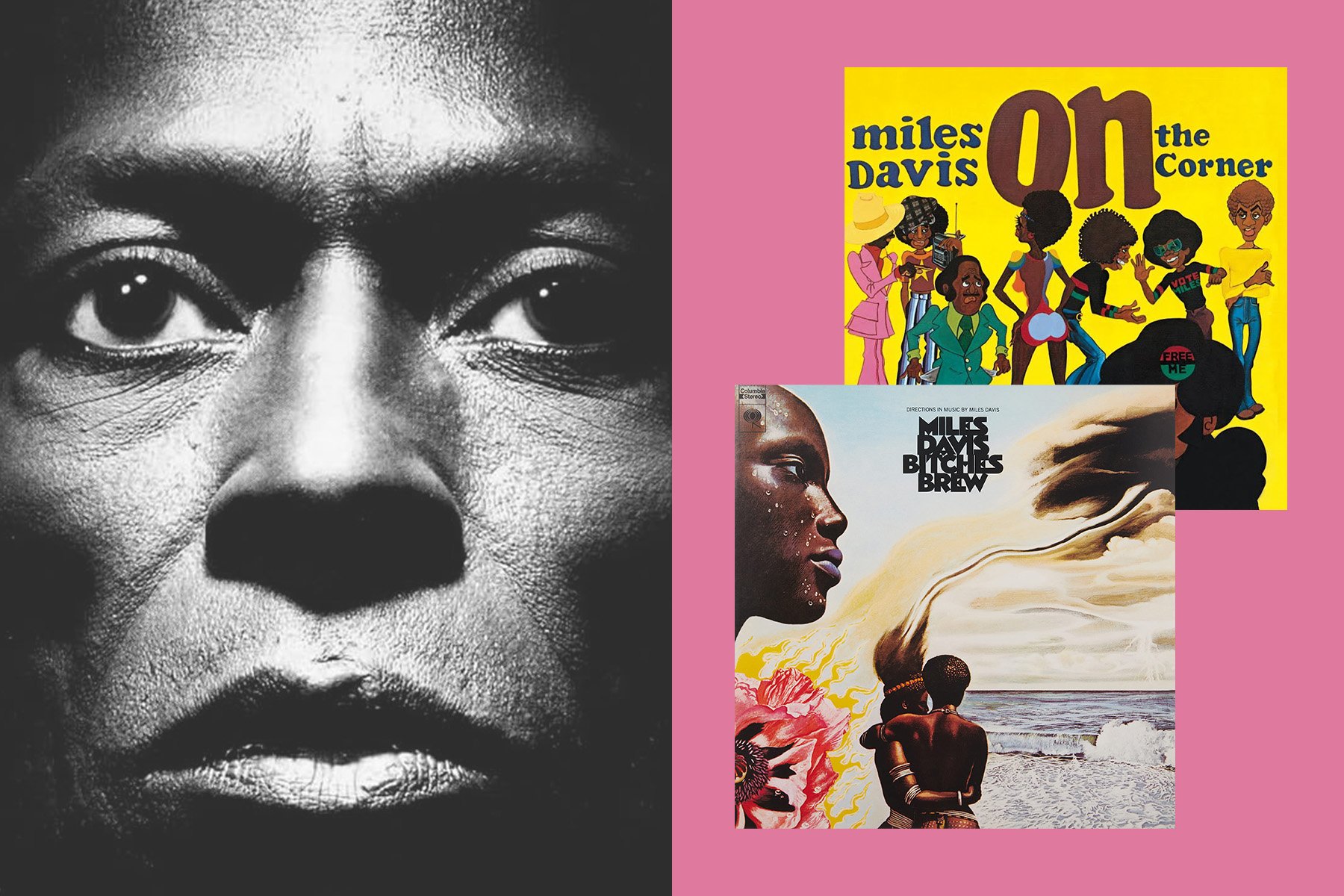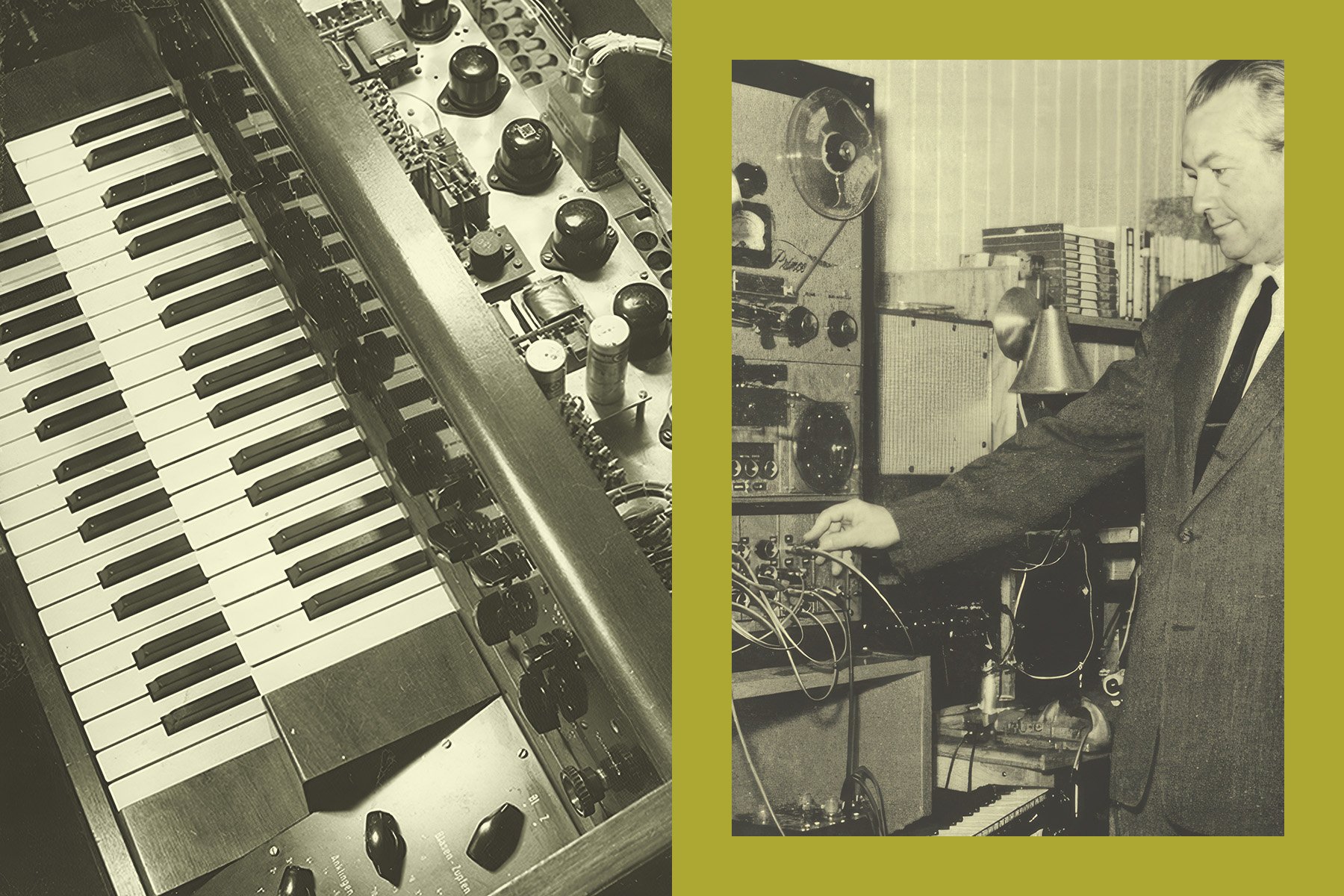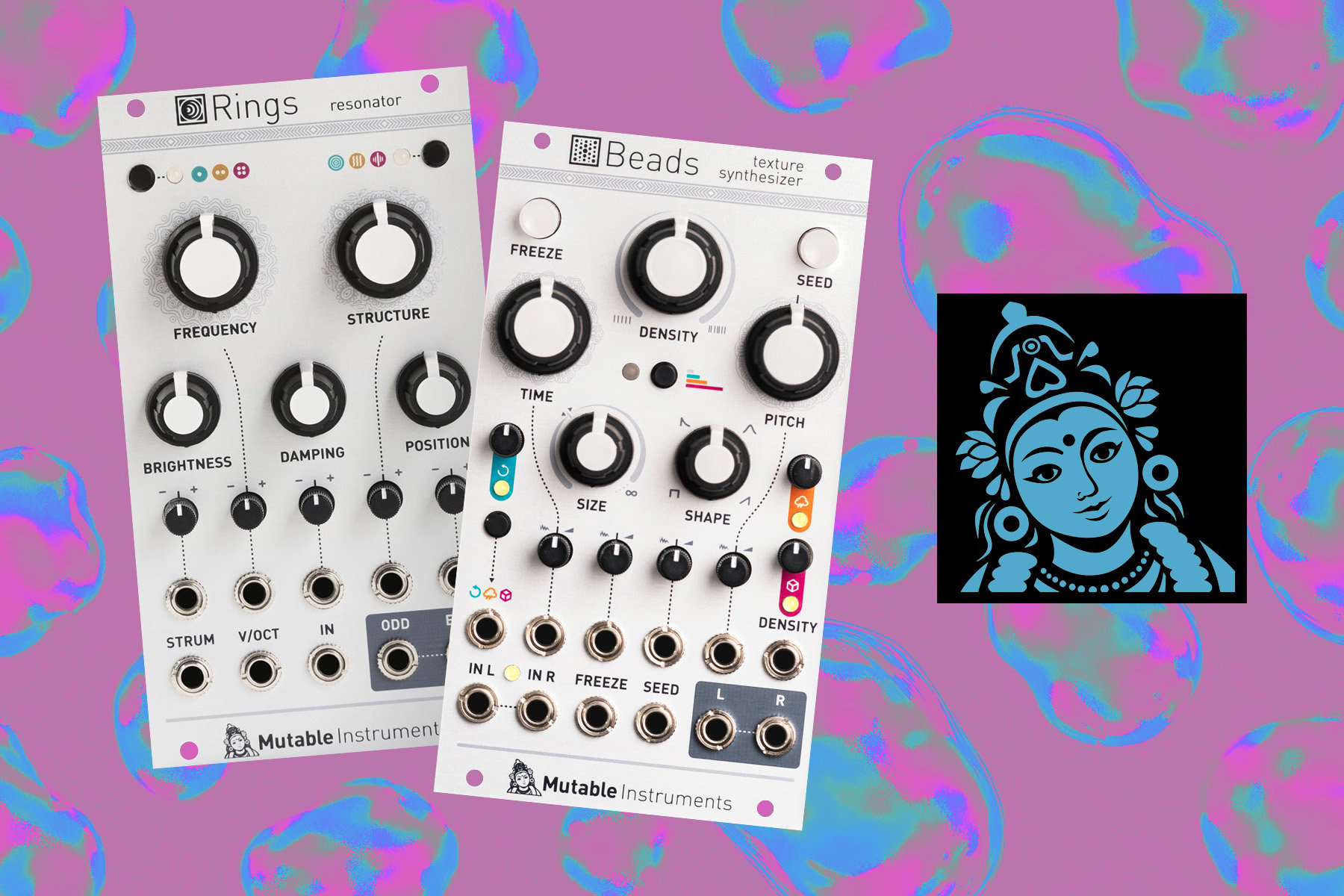In the 1980s, the music industry was bustling with new technologies aimed to advance musicians’ resources. After years of coming to terms with the strengths and shortcomings of analog instruments, musicians and manufacturers had begun to dream of what the future of electronic instruments might be, and what musical scenarios future instruments might address. Perhaps a wall of patch cables could be replaced by a means of storable/recallable settings; perhaps new instruments could offer the same editing facilities of the ever-loved but monophonic Moog Minimoog while increasing polyphony; perhaps faculties could be provided in which a single instrument could produce an entire ensemble’s worth of sound. The 1980s delivered all of this and more: instruments with preset memory and support for user presets, polyphonic synthesizers galore, digitally-controlled instruments with analog voice architecture, and wholly digital instruments which boasted entirely new and promising synthesis methods from FM to sampling, sequencing, and more.
As with any period of growth in new music technology, some instruments catch on and gain iconic status, acting as the cornerstone to entire paradigms to follow (think of the Minimoog or TR-808)—and some things simply do not catch on, perhaps due to a hefty price tag, esoteric design, or countless other pitfalls.
The Technos Acxel is one such instrument: an unabashedly digital device with a user interface comprised of more than 2000 LED-embedded capacitive touch plates and a processor the size of a modern mini-fridge, the Acxel is utterly singular. At a time when instruments like the Yamaha DX-7 and the Akai MPC were finding their way into the hands of musicians, it feels clear in retrospect that the Acxel would not find widespread use; however, it remains an icon of a different era in instrument design, one in which the future was unclear and designers felt empowered to build devices of which no one had ever dreamed.
Technos & Additive Synthesis
[Above: Technos crew with the 16pi, c. 1985]
The Acxel was produced by the now defunct Québécois company Technos, and was their only commercial offering. Technos first developed the 16pi, producing only a small handful of units used for trade shows. The first version of the 16pi was a keyboard with a touch plate console display, followed by a rack-based version that evolved into the Acxel itself. Very few Acxels were built: it is estimated that between 30 and 40 instruments were produced between its conception in 1986 and ultimate discontinuation in 1992. These instruments were focused around an esoteric synthesis method and a thorough philosophy of user interaction: resynthesis and additive synthesis.
Most electronic instruments of the day offered what are still essential synthesis resources: subtractive synthesis in which harmonically rich wave shapes are combined and filtered into classic analog synth tones; FM and Phase Distortion in which multiple simple digital operators are used to create chains of modulation for rich, evolving timbres; and sampling, in which sounds are recorded into buffers to be recalled and later sequenced, transposed, played polyphonically from keyboards, etc. The 16pi and Acxel for the most part avoided these techniques and proposed additive synthesis and resynthesis as a superior solution for sound design, believing that these methods addressed many shortcomings of more traditional approaches.
But what is additive synthesis? While subtractive synthesis focuses on using harmonically rich waveshapes as fundamental elements (saw waves, square waves, etc.), additive synthesis takes an opposite approach, using many generators with simple waveshapes (usually sine waves) each tuned to different pitches in order to construct more complex sounds. By strategically tuning these many generators and subtly varying their loudness and pitch over time, complex timbres difficult (if not impossible) to achieve from other methods can emerge. And while this concept can be traced back to the 19th century via Joseph Fourier and Hermann von Helmholtz (and followed through the electromechanical Telharmonium, Hammond tone wheel organs, Novachord, and others), its full potential as a synthesis method remained largely unexplored for decades after the impetus of electronic instruments because of the sheer number of sonic resources required to create even a simple sound: dozens of oscillators, amplifiers, and envelopes might be required for even a single tone. The true magic of the Acxel can perhaps be attributed to two specific concepts: its otherworldly user interface (the Grapher), and its embrace of experimental resynthesis.
Acxel Architecture
The Acxel itself is comprised of two primary physical components: the Solitary, a mainframe that houses the various synthesis, analysis, MIDI-related electronics, and all important I/O connections; and the Grapher, a visually striking device that combines an LED-based grid display and touch plate editing interface into a single entity. The Grapher’s primary purpose is to provide visual feedback and a user interface that makes managing the enormous number of resources involved in additive synthesis approachable and, dare we say, fun. The Grapher is surprisingly responsive and intuitive, offering realtime control of all of the Acxel's parameters. For many parameters, the Grapher bridges the gap between acting as an editing interface and a playing interface, sometimes acting like a sci-fi pseudo-drawbar interface, others like a graphic editor for a sound's evolution over time.
[Above: system diagrams from the Acxel user manual.]
The typical Acxel configuration involves an instrument with one “Syncard” installed: each Syncard, a DSP board that performs the Acxel’s synthesis functions, contains 256 Intelligent Digital Oscillators (IDO), 256 Intelligent Digital Amplifiers (IDA), 256 Intelligent Pitch Envelope Generators (IPEG), 256 Intelligent Volume Envelope Generators (IVEG), and eight Intelligent Digital Filters (IDF), as well as a smattering of additional voice-specific envelopes. These resources are in most scenarios divided into eight voices with 32 internal Intelligent Synthesis Cells (or ISCs, each comprised of a single IDO, IDA, IPEG, & IVEG), as well as an additional amplifier and dedicated envelope to define the overall shape of each voice. In a typical setup, a single sound is assigned to all voices polyphonically, however it is possible using the Timbre and Ensemble options to create layers, splits, even to assign individual sounds to separate MIDI channels. Technos’s Spectrum Concept and Envelope Concept combined with the Grapher’s user interface make managing this rather formidable array of tools simple.
The Spectrum Concept
The Spectrum Concept in essence means that individual parameters are not edited on, for instance, an oscillator-by-oscillator basis, but instead globally. Individual parameters are each offered a spectrum-level display and editor: specifically, there are independent pages for Integer, Beating, Amplitude, and Phase spectra. These pages on the Grapher enable easy editing of all ISCs simultaneously, making the relationship between individual cells internal to a voice easy to visualize and change.
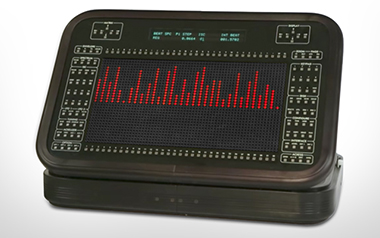 The beating spectrum display
The beating spectrum display
The Integer Spectrum, for instance, determines which overtone (from 1 to 32) to which each individual cell is tuned relative to the fundamental MIDI note (effectively acting as an integer multiplier for the fundamental frequency). With the default spectrum, each ISC is tuned to successively higher harmonics, creating a saw-like tone; however, by sliding a finger across the Grapher, the sound’s overtone structure can be altered. The Beating Spectrum allows the introduction of inharmonicity on an ISC-by-ISC basis, turning harmonically pure sounds into more complex and nuanced tones through subtle (or extreme) detuning, with a range of +/- 1 Overtone from the defined Integer for each ISC. The Phase and Amplitude Spectra work similarly, using the same sort of bar graph-style display to demonstrate the phase and loudness relationships between a voice’s internal ISCs.
This style of editing is the essence of what Technos calls Fixed Additive Synthesis (FAS), additive synthesis with static timbres—but the Acxel’s real magic lies in Dynamic Additive Synthesis (DAS), in which Intelligent Envelope Generators are used to animate the parameters of individual cells and voices as a whole.
The Envelope Concept
The Envelope Concept is another approach to using the Grapher, in which the display can be used to manually draw contours for the rather large number of 64-breakpoint envelopes native to each voice. Almost every variable parameter can be modulated via a dedicated envelope—and while all envelopes internal to a voice must necessarily be the same duration, they can have completely different shapes from one another.
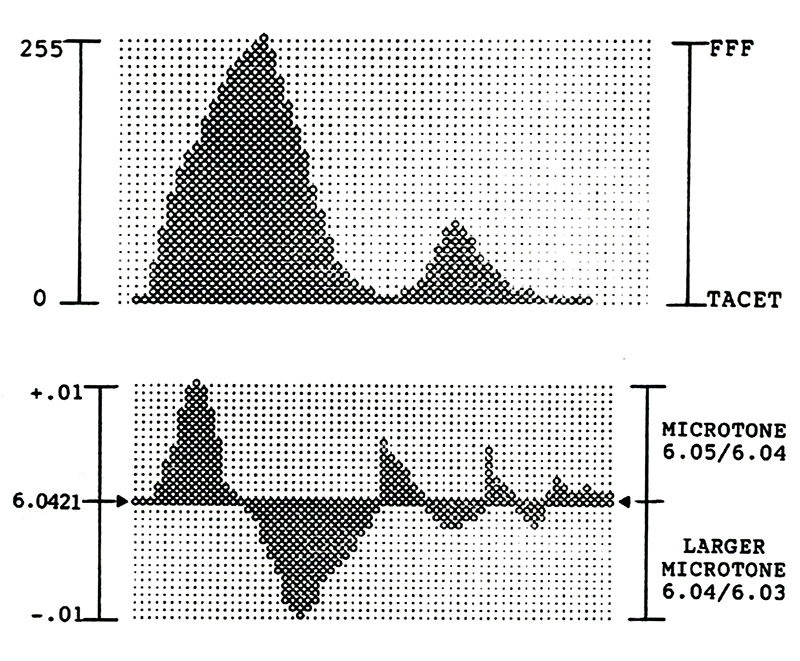
[Above: DAS Amplitude Envelope, top; DAS-P Pitch Envelope, bottom.]
Four per-voice envelopes are accessible via the Grapher’s Envelope section: dedicated envelopes for voice volume, filter cutoff, FM depth (yes, this thing does FM!), and Color, another special filter parameter. Envelope duration is specified on the LCD display and may be edited using the numeric keypad; an envelope sustain point may be specified by selecting a position on the Alphaline, and envelope loop regions may be defined by selecting a range of adjacent positions on the Alphaline, making it possible to create quite complex envelope shapes that behave differently when sustained than when activated with a transient key press. Furthermore, nearly all envelopes use what Technos calls the Dual Envelope Concept, meaning that two completely different envelopes may be defined for each parameter and switched beyond a defined key velocity threshold.
The real fun, though, is found in the Grapher’s ISC section, where editing of DAS (again, Dynamic Additive Synthesis) parameters occurs. By selecting the ISC Phase, Amp, or Freq pages, one may switched from FAS to DAS mode, deploying a huge array of envelopes to modulate the various parameters of each ISC. This is where things get peculiar, and where some of the more interesting sounds begin to emerge. The Numeraline (the numeric line of touch plates beneath the Grapher’s Matrix) allows the user to select which ISC’s envelope is displayed on the Matrix for the selected parameter, but also allows selection of multiple ISCs simultaneously for group editing. In this way, it is possible to select all ISCs and provide them identical Amplitude envelopes, for instance—or, alternatively, one could divide the spectrum into a half-dozen subsections, in which groups of ISCs have distinct dynamic profiles—or, further still, one could assign completely independent envelope shapes to each ISC. This type of intense envelope editing might seem a bit overwhelming, but the Grapher makes it simple to create complex sounds quickly.
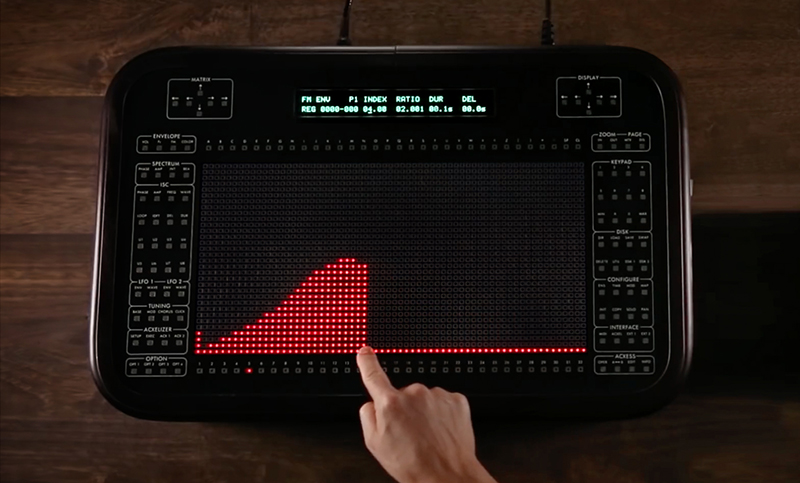
[Above: drawing an FM envelope on the Acxel.]
The ISC Freq page allows access to two different types of DAS frequency editing, DAS-I and DAS-P. DAS-I enables envelope modulation of each ISC’s Integer value, creating harmonic arpeggios, trills, and other peculiar (but lovely) effects. The alternate DAS-P mode allows envelope modulation of Beating (inharmonicity), yielding continuous pitch variations that result in vibrato, clangorous sweeps, laser sounds, whale song, shimmering effects, and far more. The effect of assigning multiple DAS-P envelopes to different ISCs is quite striking: sounds may appear to elastically separate and re-converge across their duration, taking multi-faceted journeys through uncharted pitches along the way.
Of course, managing this much information and creating intentional sounds can be difficult. For this reason and others, Technos opted to offer a different means of generating all of the data required to create new sounds with the Acxel with minimal user input: a resynthesis-based process called Acxelization.
Acxelization & Resynthesis
The Acxelizer is one of the defining concepts in the Acxel: a resynthesis facility that allows users to reproduce any sound without tediously programming the sound's internal parameters. The process of Acxelization involves recording an external sound into the Acxelizer's buffer, after which the recorded sound is analyzed to produce all of the data necessary to shape the Acxel's additive synthesis parameters. By using Fast Fourier Transform (FFT) analysis and proprietary artificial intelligence algorithms, the Acxelizer uses the "crude force" sampled data to generate "AI refined" data: the Acoustic Elements ("Acxels", the instrument's namesake) that comprise the resynthesized sound's characteristics.
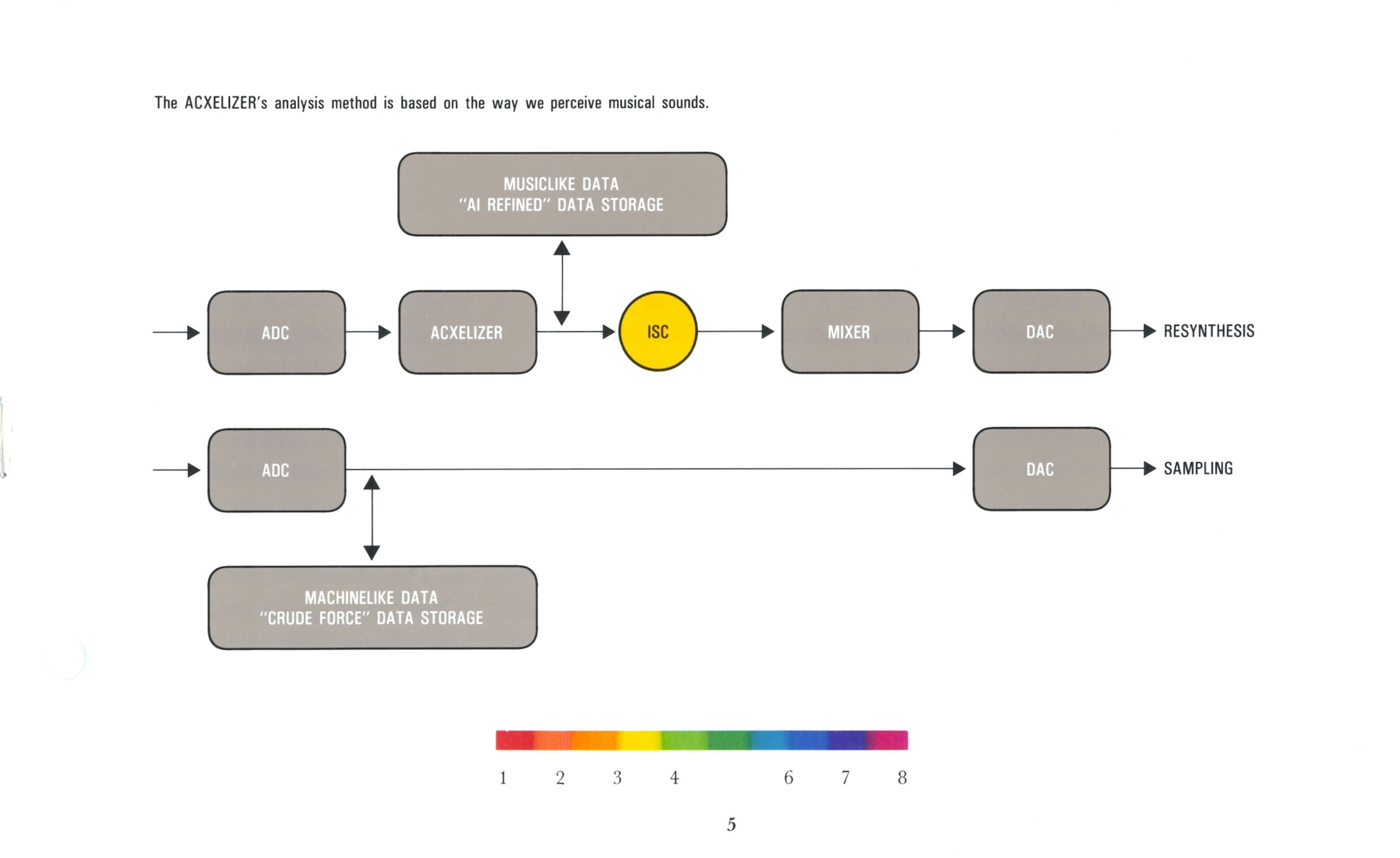
[Above: Acxelization v. Sampling, from the Acxel product brochure]
Technos valued resynthesis over sampling because it enables the decoupling of playback speed and pitch: for instance, with traditional samplers, playing back samples at lower than the recorded pitch would require timestretching (and higher than recorded pitch, time compression). Because the Acxel handles reproducing sounds by defining overtone structure and changes in sonic structure over time, it does not fall prey to this issue (which Technos called "The Tandem Problem").
Of course, several interesting implications come along with this approach: for instance, resynthesized sounds may be globally compressed or expanded in time, generating peculiar time stretching effects. Resynthesized sounds may also be modified from the inside out—allowing for manipulation of the behavior of individual harmonics, alteration of the overall overtone structure without alteration of dynamic profile, addition of FM to natural sounds...there is virtually no end to the modifications possible, making the Acxel a tremendously powerful tool for sound design.
Truthfully, the results of Acxelization are sometimes more successful than others—some sounds survive the process relatively gracefully, while others result in unexpected artifacts and idiosyncrasies. Often, Acxelized sounds require far more resources than the Acxel's default 32 ISC's per voice, in which case the resources from multiple voices may be used to assist the construction of the Acxelized sound. In our experience, many Acxelized sounds use well more than half of a Syncard's resources, rendering the instrument monotimbral and monophonic.
Looking Back
All of this is to say nothing about arbitrary waveshape drawing, dynamic FM, cell relocation, timbre layering, and the countless other techniques built in to this mysterious beast. Despite the rather incredible set of possibilities it offers, though, the Acxel was not an enormous commercial success: Technos went out of business by 1992 and Acxel production ceased. The Acxel user interface and manual are left with several half-complete concepts, unexplained labels, and "reserved" functions seemingly awaiting software updates that never came. Development did begin on an Acxel II around 2002 by Idarca Audio—a specialized rack and PCI-based software/hardware platform for tackling many of the same tasks possible with the original Acxel. Details are scarce, however, as the Acxel II project was never completed.
Additive synthesis and resynthesis have survived in various forms, both in hardware and software. Additive techniques are available in Eurorack modules such as the XAOC Devices Odessa; unique approaches to resynthesis can be found in the Rossum Panharmonium, Make Noise Soundhack Spectraphon, as well as in Arturia's recent software recreation of the classic Synclavier workstation. Additional approaches to spectral manipulation can be found in the Tasty Chips GR-Mega and countless modern software tools.
Rich and powerful multi-stage envelope generators are now more common as well: the XAOC Zadar immediately comes to mind, a quad 1000-segment EG whose spirit is not dissimilar to the Acxel's Envelope Concept. While these devices may not have been directly inspired by the Acxel, they show that its premise has survived, leaving the Acxel itself as a peculiar glimpse into what the future of musical instruments could have been like.
The Acxel may not be the only resynthesis-based device, but it feels safe to label it the most peculiar. We are stricken not only by its rarity, but by its boldness: an instrument that intentionally defies established methods of soundmaking, that offers a completely singular means of user interaction, and that brings its own rich and deep vocabulary and methodology to the table. In the 1980s musical economy, a time in which electronic instruments became increasingly affordable and the electronic music market more consumer-driven, the Acxel broke free of convention in order to follow what a small group of designers thought musicmaking could be like...and while their vision was never widely spread, it is nonetheless an inspiring way of conceptualizing sound and music.







